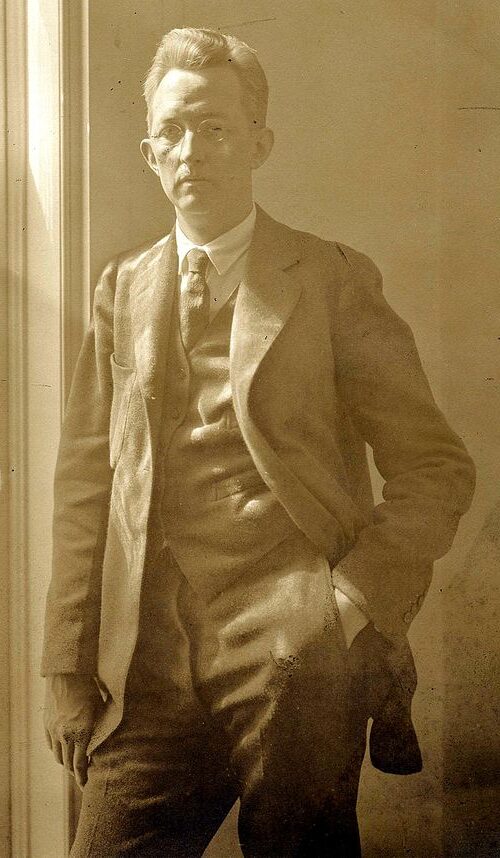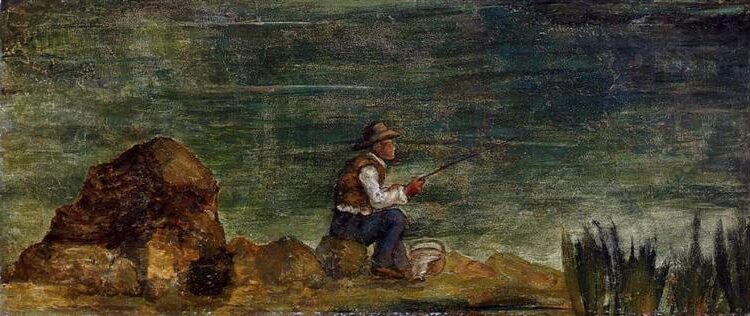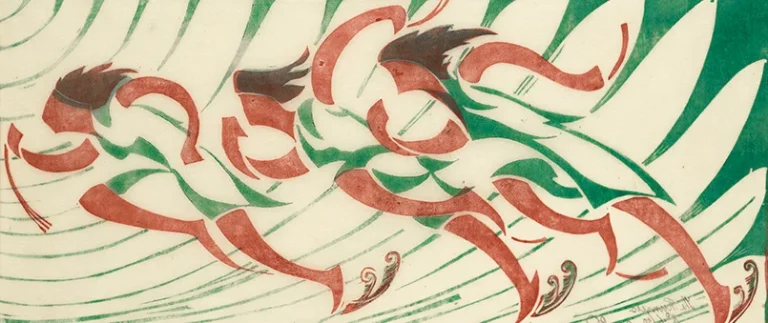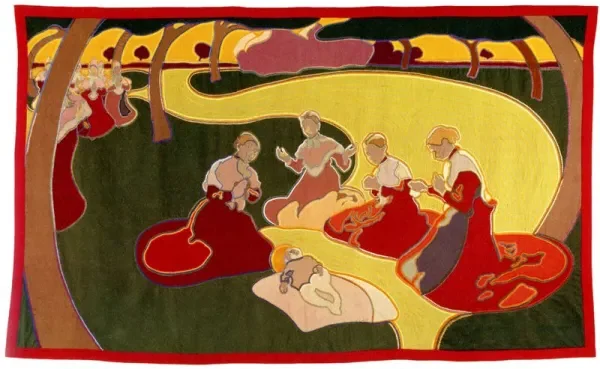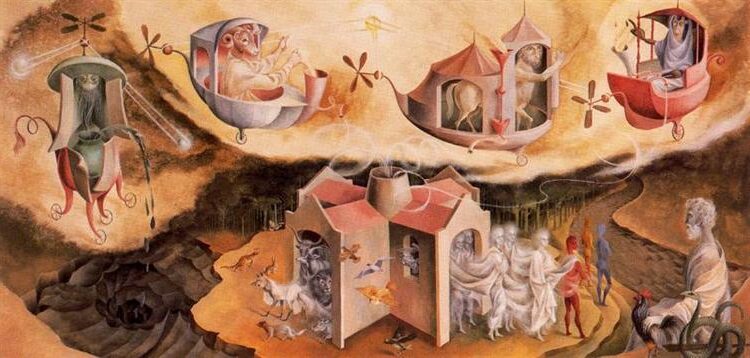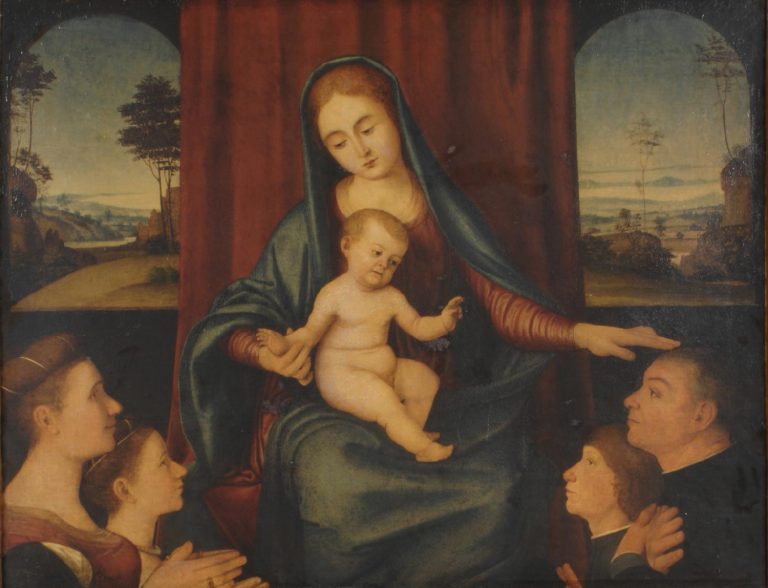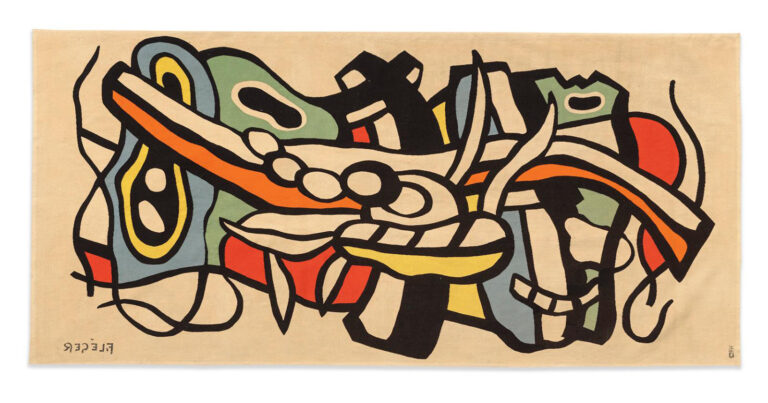Charles Sheeler Painter: The Master of Precisionist Art in America
Born: July 16, 1883, Philadelphia, Pennsylvania, US
Death: May 7, 1965, Dobbs Ferry, New York, US
Art Movement: Precisionism, American Modernism
Nationality: American
Teacher: William Merritt Chase
Institution: Pennsylvania Museum School of Industrial Art and Pennsylvania Academy of Fine Arts
Charles Sheeler Painter: The Master of Precisionist Art in America
Life and Career of Charles Sheeler
Charles Sheeler was a significant American artist who successfully bridged photography and painting throughout the first half of the 20th century. His precision and attention to detail became hallmarks of his style across both media.
Early Years and Education
Charles Sheeler was born on July 16, 1883, in Philadelphia, Pennsylvania. He began his formal art education at the School of Industrial Art in Philadelphia, where he studied from 1900 to 1903. Following this foundation, he continued his training at the Pennsylvania Academy of the Fine Arts for three years.
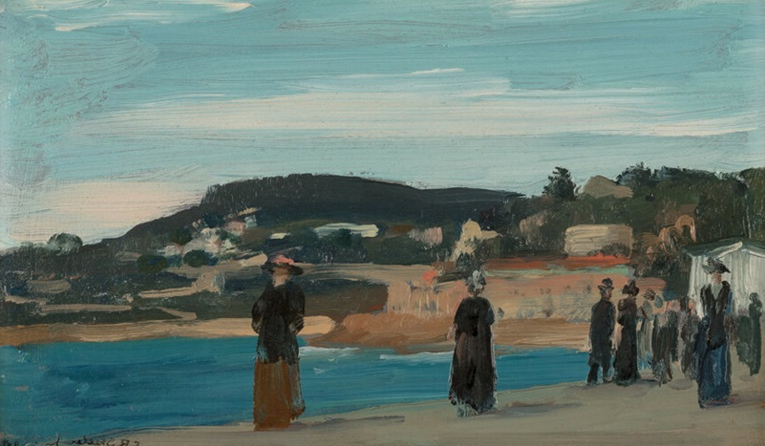
Promenade Along the Beach, Nice, 1909, by Charles Sheeler
During his early career, Sheeler developed a strong interest in architectural forms and geometric precision. This fascination would influence his artistic style throughout his life.
In 1910, Sheeler and his friend Morton Schamberg rented an old stone house in Doylestown, Bucks County. This historic structure became the subject of some of his earliest significant photographic works and paintings, establishing his methodical approach to composition.
Photography and Commercial Work
Sheeler initially turned to photography as a way to earn income while developing his painting skills. However, his photographic work quickly gained recognition for its artistic merit on its own terms.
From 1926 to 1931, Sheeler worked as a freelance photographer in New York City. During this period, he shot celebrity portraits and fashion photography for prestigious magazines like Vogue and Vanity Fair.
His commercial projects included a significant commission from the Ford Motor Company to document their River Rouge Plant. These industrial photographs became some of his most celebrated works and influenced his painting style.
In 1921, Sheeler collaborated on the avant-garde film “Manhatta,” which showcased New York City’s urban landscape through a series of carefully composed shots. This project further demonstrated his keen eye for architectural form.
Transition to Full-Time Painting
By the 1930s, Sheeler had established himself as a leading figure in American Precisionism, a style characterized by sharply defined, geometric renderings of industrial and architectural subjects.
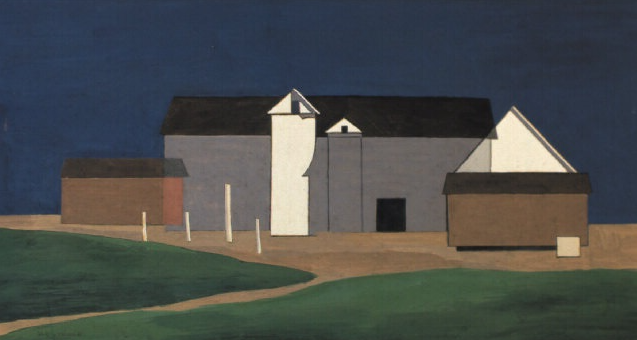
Blue Barns, 1946, by Charles Sheeler
Many of Sheeler’s paintings were directly based on his photographs. He often used his camera as a compositional tool, transforming photographic images into precise, clean-lined paintings that celebrated American industrial and architectural forms.
His painting technique evolved to include complex superimpositions similar to photographic double exposures, especially in his later career. This approach allowed him to create layered compositions that explored depth and spatial relationships in innovative ways.
Sheeler continued painting until his death on May 7, 1965. His work influenced generations of artists and remains an important bridge between photography and painting in American modern art.
Artistic Style and Influence
Charles Sheeler developed a distinctive artistic approach that combined precision, clean lines, and an appreciation for industrial forms. His work bridged photography and painting while drawing inspiration from both American industry and European art movements.
Precisionism and Industrial Subjects
Sheeler became a leading figure in Precisionism, an American art movement focused on industrial and urban themes. His paintings featured sharp edges, geometric forms, and meticulous attention to detail. Unlike some artists who criticized industrialization, Sheeler celebrated machine aesthetics and found beauty in factories, power plants, and other industrial structures.
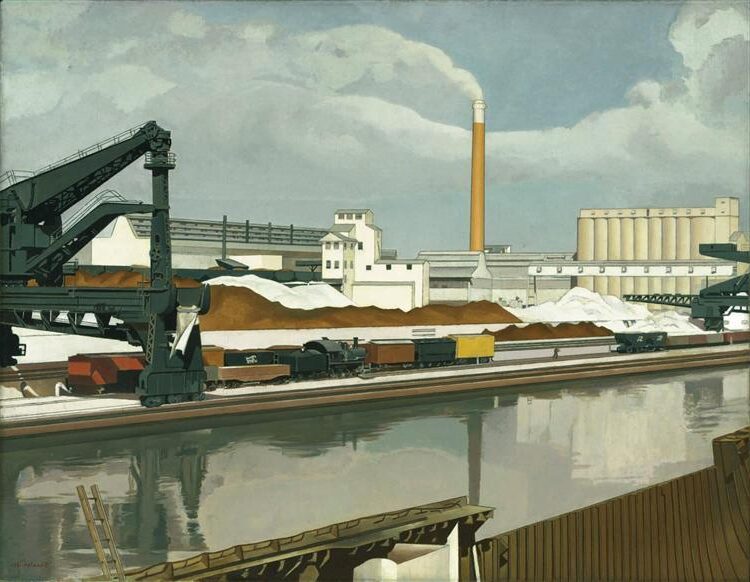
American Landscape, 1930, by Charles Sheeler
His work “American Landscape” (1930) exemplifies his precise rendering of Ford’s River Rouge Plant, transforming industrial architecture into a composition of geometric shapes and clean lines.
Sheeler approached industrial subjects with a sense of order and clarity. His paintings often removed human figures, focusing instead on the pure forms of machinery and architecture.
Interplay of Photography and Painting
Sheeler’s dual career as both photographer and painter uniquely shaped his artistic vision. He often photographed subjects first, then used these images as references for his paintings.
This technique allowed him to achieve extraordinary precision in his painted works. The Metropolitan Museum of Art notes that the “sharpness and clarity of his vision” became his trademark.
His photographic eye influenced his painting style, creating works with almost camera-like accuracy but enhanced by subtle artistic choices in composition and color.
This cross-medium approach made Sheeler innovative among American Modernists. He didn’t simply reproduce photographs in paint but translated photographic vision into a distinct painting style.
Influence of European Modernists
Sheeler’s work shows clear influence from European Modernist movements, particularly Cubism. He adapted cubist principles of fragmented forms and multiple perspectives into his distinctly American style.
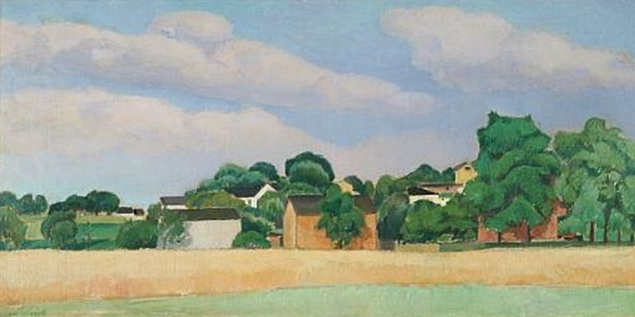
Country Landscape, 1925, by Charles Sheeler
After visiting the famous 1913 Armory Show that introduced European modernism to American audiences, Sheeler began incorporating cubist-inspired elements into his work.
Unlike pure Cubists, Sheeler maintained more recognizable subject matter while adopting the movement’s emphasis on geometry and structure. His work represents an American interpretation of European ideas.
By combining European modernist techniques with American industrial subjects, Sheeler created a unique artistic language that helped define American art in the first half of the 20th century.
Major Works and Legacy
Charles Sheeler’s artistic contributions span painting and photography, with works that redefined American landscapes and industrial imagery. His precise, clean style captured the beauty of American industry while influencing generations of artists.
Iconic Paintings and Photographs
Sheeler’s “Classic Landscape” (1931), housed in the National Gallery of Art, stands as one of his defining works. This painting depicts the Ford Motor Company’s River Rouge Plant, transforming industrial architecture into a geometric composition of striking precision.
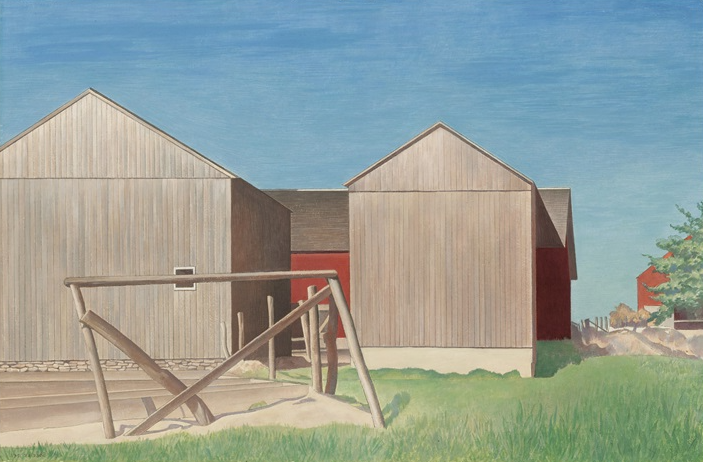
Farm Buildings, Connecticut, 1941, by Charles Sheeler
“American Landscape” similarly celebrates industrial might through Sheeler’s distinctive precisionist lens. The stark lines and geometric forms create a sense of order and monumental presence.
In photography, Sheeler’s gelatin silver prints demonstrated his mastery across mediums. His photographs of industrial sites show the same attention to form and structure as his paintings.
“Manhatta,” a 1921 film collaboration with Paul Strand, captured New York City’s urban landscape with the same precisionist eye he brought to his still work.
Museum Collections and Exhibitions
Sheeler’s works are prominently featured in America’s leading museums. The National Gallery of Art maintains a significant collection, as does the Smithsonian American Art Museum, which celebrates his contribution to American Modernism.
The Whitney Museum of American Art in New York has hosted major Sheeler retrospectives that highlight his dual mastery of painting and photography.
The Terra Foundation for American Art and Fine Arts Museums of San Francisco also house important Sheeler works, ensuring his legacy remains accessible to the public.
Major exhibitions throughout the 20th century and beyond have solidified Sheeler’s reputation as a pioneer of American Modernism, with recent shows continuing to examine his unique vision.
Impact on American Modernism
Sheeler’s precisionist approach helped establish a distinctly American modernist aesthetic. By finding beauty in industrial subjects, he challenged traditional notions of what constituted appropriate artistic subjects.
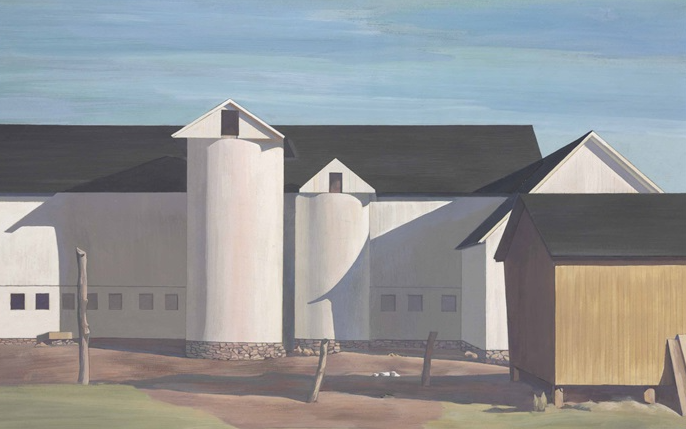
White Sentinels, 1942, by Charles Sheeler
His work bridged fine art and commercial practice, influencing generations of photographers and painters interested in architecture and industrial design.
Sheeler’s crisply articulated interpretations of modernizing America helped define the visual language of precision and clarity that characterized the Precisionist movement of the 1920s-30s.
His ability to work successfully in both painting and photography broke down barriers between these mediums, encouraging future artists to explore multiple forms of expression.
Frequently Asked Questions
Charles Sheeler’s work sparked interest through his unique blend of photography and painting, particularly in capturing industrial scenes. His Precisionist style and technical skill led to many common questions about his approach, influence, and legacy.
What are the distinguishing characteristics of Charles Sheeler’s Precisionism style?
Sheeler’s Precisionism featured clean lines, geometric shapes, and crisp details that highlighted the beauty in industrial forms. His work emphasized sharp edges and clear compositions with minimal human presence.
He used a restricted color palette, often favoring cool tones that enhanced the mechanical precision of his subjects. The style featured flattened perspectives and simplified forms that created a sense of order.
Sheeler’s paintings displayed meticulous attention to detail while simultaneously abstracting the subjects into their essential geometric components. This balance between realism and abstraction became a hallmark of his distinctive approach.
How did Charles Sheeler’s work at the River Rouge Plant influence his art?
Sheeler’s 1927 commission to photograph Ford’s River Rouge Plant became a pivotal moment in his career. The industrial complex provided him with subject matter that aligned perfectly with his precision-focused aesthetic.
His photographs and subsequent paintings of River Rouge celebrated industrial architecture as a modern American cathedral. The massive scale, geometric forms, and functional beauty of the plant informed his most iconic works.
These images transformed industrial landscapes from mere functional spaces into compelling artistic subjects worthy of serious attention. The River Rouge series showed how Sheeler could reveal beauty in machinery that others might overlook.
Which notable museums, such as MoMA or the Metropolitan Museum of Art, have collections of Charles Sheeler’s paintings?
The Museum of Modern Art (MoMA) holds several significant Sheeler works including “Criss-Crossed Conveyors” from his River Rouge series. The Metropolitan Museum of Art maintains important paintings such as “American Landscape.”
The Whitney Museum of American Art houses a substantial collection of Sheeler’s work, reflecting his importance in American modernism. The National Gallery of Art contains significant paintings and photographs showcasing his dual-medium approach.
Other institutions with notable Sheeler holdings include the Art Institute of Chicago and the Philadelphia Museum of Art. His widespread presence in major collections testifies to his significance in American art history.
How did photography shape Charles Sheeler’s approach to painting?
Sheeler began his career as a commercial photographer, which trained his eye to see subjects with mechanical precision. This photographic vision carried over into his painting style, influencing his compositional choices.
He often created photographs of subjects first, then used these images as references for his paintings. This process allowed him to translate photographic clarity into painted form while making deliberate artistic adjustments.
Photography taught Sheeler to appreciate the abstract qualities in ordinary objects and industrial forms. His paintings reveal this photographic influence through their precision, cropping techniques, and attention to detail.
What are some of the most celebrated prints created by Charles Sheeler?
“Delmonico Building” (1926) stands among Sheeler’s most recognized lithographs, showcasing his interest in architectural forms. His “Barn Abstraction” prints demonstrated how he could transform rural American architecture into geometric compositions.
The “Interior with Stove” lithograph exemplifies his ability to find formal beauty in everyday domestic objects. Sheeler’s prints often explored the same subjects as his paintings but allowed him to experiment with different tonal qualities.
His printmaking work reinforced his reputation for technical precision while reaching a wider audience than his paintings alone. These works helped establish Sheeler as a versatile artist working successfully across multiple media.
How did Charles Sheeler’s artwork contribute to the understanding and appreciation of industrial landscapes?
Sheeler elevated industrial subjects from mere documentation to fine art. He helped viewers recognize aesthetic value in America’s factories and machines. His work challenged traditional distinctions between beautiful and functional objects.
By depicting industrial architecture with the same care traditionally reserved for natural landscapes, Sheeler expanded the definition of American beauty. His precise style captured the optimism about technological progress that characterized his era.
Sheeler’s images provided a visual counterpart to the cultural shift toward embracing modernization and mechanization. His work continues to influence how we perceive the relationship between technology, industry, and aesthetic value.


